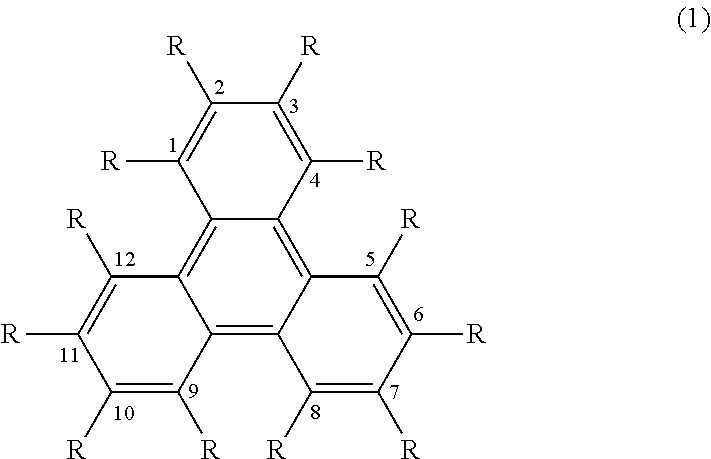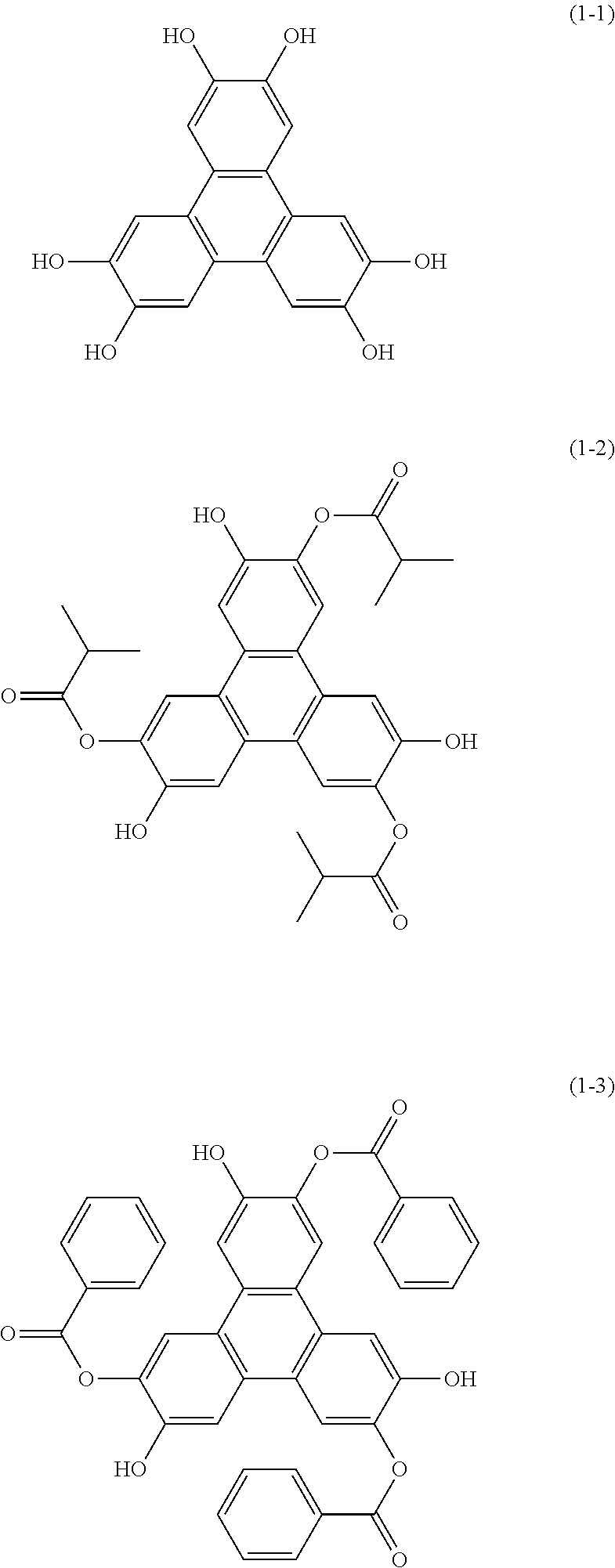Composition for forming topcoat layer and resist pattern formation method employing the same
- Summary
- Abstract
- Description
- Claims
- Application Information
AI Technical Summary
Benefits of technology
Problems solved by technology
Method used
Image
Examples
examples 101 to 121
[0063]As the triphenylene derivatives, the afore-mentioned compounds (1-1), (1-2), (1-3) and (2B-1) were prepared. With respect to the compound (1-1), a commercial product thereof was employed. The compounds (1-2) and (1-3) were synthesized by making the compound (1-1) react with carboxylic anhydrides. Specifically, the compound (1-1) was dissolved in dimethylformamide, and then triethylamine was added. After the mixture was stirred for 10 minutes, three equivalents of isobutylic anhydride or benzoic anhydride was added and made to react by heating with stirring at 110° C. for 2 hours. The reaction mixture was cooled to room temperature, and then condensed by distilling off the solvent to reduce by half under reduced pressure. Thereafter, 0.1 M aqueous solution of hydrochloric acid was gradually added with stirring into the condensed reaction mixture, so as to form precipitates. The formed precipitates were collected by filtration, washed with water, and dried to obtain the aimed tr...
PUM
 Login to View More
Login to View More Abstract
Description
Claims
Application Information
 Login to View More
Login to View More - R&D
- Intellectual Property
- Life Sciences
- Materials
- Tech Scout
- Unparalleled Data Quality
- Higher Quality Content
- 60% Fewer Hallucinations
Browse by: Latest US Patents, China's latest patents, Technical Efficacy Thesaurus, Application Domain, Technology Topic, Popular Technical Reports.
© 2025 PatSnap. All rights reserved.Legal|Privacy policy|Modern Slavery Act Transparency Statement|Sitemap|About US| Contact US: help@patsnap.com



